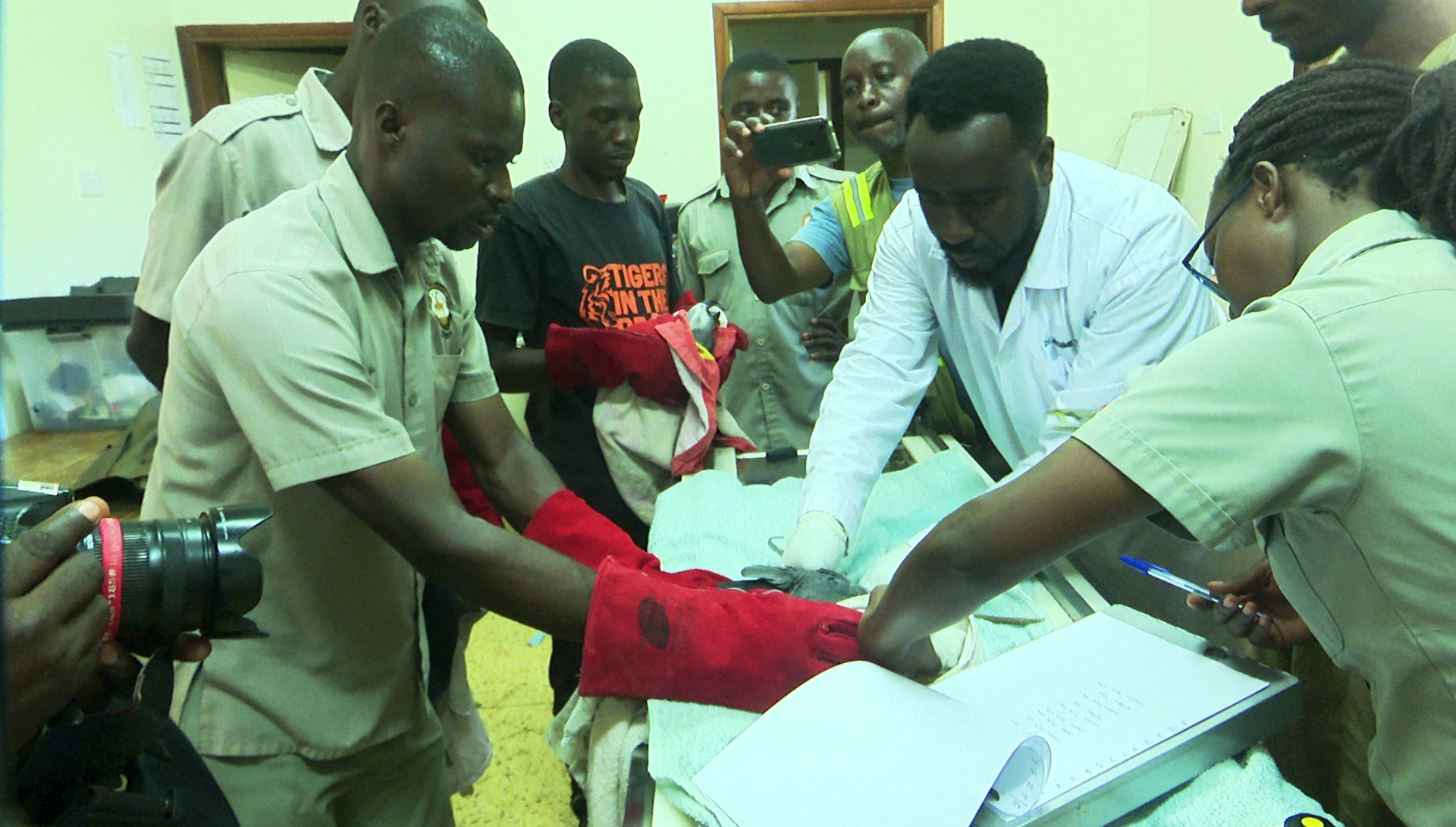Prime
World’s most traded bird now in full flight

Veterinary officers at UWEC examine grey parrots that had been confiscated from traffickers before they are released back to the wild. PHOTO/IVAN KAMANA WALUNYOLO
What you need to know:
- Owing to their impressive vocal abilities (they can count and identify colours), the exotic pet trade of greys has fuelled their rampant poaching.
On April 21, 2022, the Uganda Wildlife Authority (UWA) mounted a joint operation in which a Congolese national—later identified as Bob Mbaya Kabongo—was captured with 122 African Grey parrots stuffed in two cages.
The birds were entrusted to the care of the Uganda Wildlife Education Centre (UWEC).
When veterinarians at the centre got the parrots out of the cages, three turned up dead. Two were fighting for their lives.
The International Union for Conservation of Nature Red List of Threatened Species hazards the total global population of African Grey parrots at anywhere between 40,000 and 100,000.
Known to take to lush tropical rainforests like Kibale National Park in Uganda, it is easy to see why the African Grey parrot is an endangered bird.
The greys’ brainpower is legendary, with some putting their repertoire of sounds in the hundreds.
Their intelligence—widely equated to that of a five-year-old human—has led many to give in to the temptation of domesticating them for companionship or pleasure.
This has led to a number of traffickers—such as Kabongo—to take many wild greys from their habitats in the rainforest to live in homes as pets.
This has summarily fed a thriving illegal trade in wildlife. Kabongo, who pleaded guilty to two counts of unlawful possession of wild greys on May 12, 2022, is neither the first nor the last trafficker of the protected bird species.
Owing to their impressive vocal abilities (they can count and identify colours, to mention but two), the exotic pet trade of greys has fuelled their rampant poaching.

400 Birds. The number of greys rescued after being plucked from the wild—in violation of the law—for the exotic pet business. PHOTO/IVAN KAMANA WALUNYOLO
In 2011 alone, as many as 400 greys were rescued after being plucked from the wild—in violation of the law—for the exotic pet business.
While the fate of those greys is not documented, the ones rescued from Kabongo are anything but.
UWEC this week released into the wild of Kibale 58 of the 119 greys Kabongo poached.
Mr Charles Tumwesigye, the director of field operations at UWA, told Sunday Monitor that Kibale was cherry-picked because “the forest is more protected from traffickers” like Kabongo than any other rainforest in the country.
What’s more, UWEC has—as per one of its veterinarians, Dr Victor Musiime—put “numbered rings on every parrot’s leg for monitoring purposes in the wild”
“This will enable us identify them during the monitoring process,” Dr Musiime further disclosed about the 58 greys that have been assessed and passed fit to survive on their own in the wild.
The 61 greys that are still in the care of UWEC have what Dr Musiime described as “small issues health-wise.”

UWEC officials flag off an ambulance taking the rescued parrots to Kibale National Park in Uganda.PHOTO/IVAN KAMANA WALUNYOLO
He added: “We are still ascertaining their conditions before they are taken back to the wild. They may become vulnerable to other predators and be eaten. Those that we will find unable to be taken back will stay in the facility and be used for conservation education.”
Mr David Musingo, UWEC’s acting executive director, told Monitor that the centre—popularly known as the Entebbe Zoo—has spent quite a fortune nursing the greys to full health.
The Japan International Cooperation Agency’s Uganda office offered a telling hand insofar as guaranteeing the greys’ welfare is concerned.
They, for one, built a cage for the parrots.
UWEC is the national designated CITES Wildlife Rescue Centre.
It derives its mandate of rescue, rehabilitation of injured, confiscated, or orphaned wildlife from the UWEC Act 2015.




